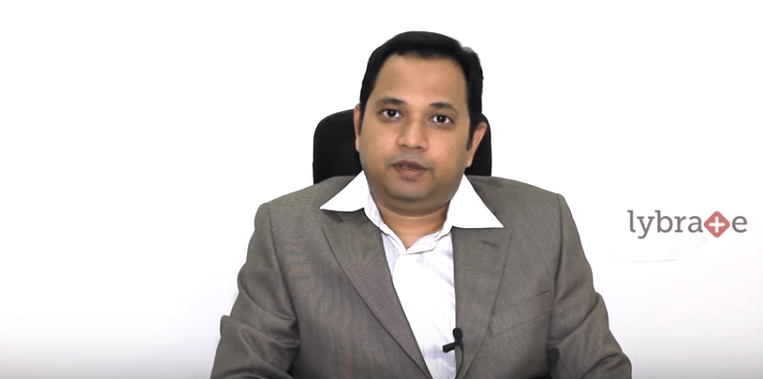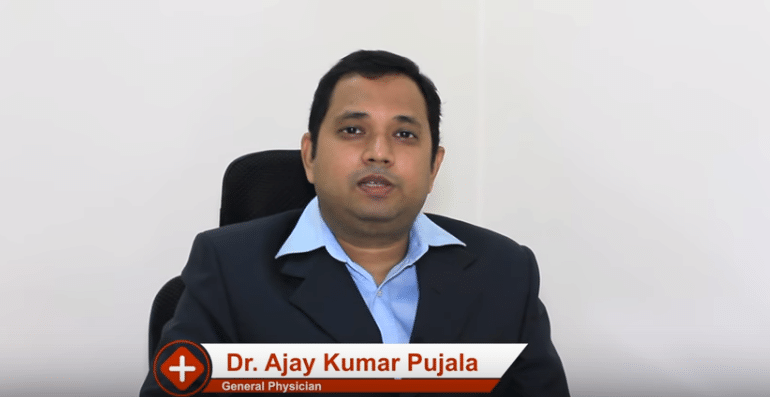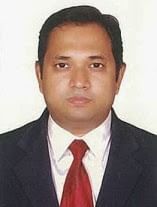

Dr. Ajay's HIV & AIDS Clinic
HIV Clinic
About Clinic
Our medical care facility offers treatments from the best doctors in the field of HIV Specialist . We are dedicated to providing you with the personalized, quality health care that you de...read more
Clinic Timing
Clinic Location
Clinic Images
Videos

What are the causes, symptoms and treatment for HIV
HIV AIDS kaise spread hota hai, iske symptoms kya hai, iska treatment kaise karte hai, iske barey mein aaj hum baat karengey. HIV ek retrovirus hai jo usually sexual mode se transmit hota hai. Sexual mode ke ilawa yeh infected needles se bhi spread ho sakta hai yah infected blood transfusion se bhi spread ho sakta hai, aur lastly mother agar infected hai toh mother se child ko bhi aa sakta hai. Toh hum isko kaise diagnosis karte hai? Basically blood test se yeh pata chal jata hai, iske do tarah ke blood test available hai, ek se aap directly antigens ko detect kar sakte hai jaise p24 antigens yah aap directly antibodies ko detect kar sakte hai jaise ki ELISA aur western blot. Yeh test se malum ho jata hai ki patient HIV infected hai yah nahin. Agar HIV hai confirm honey ke baad patient ko hum stage kya hai pata karne ke liye further test karte hai jaise ki CD4 Count aur viral load keh ke do test rehte hai iske liye toh iske hisaab se patient ko hum 4 stage mein divide kar sakte hai stage 1, stage 2, stage 3, stage 4.
Agar stage 1 mein dekha jaye toh patient mein bilkul sympotoms nahin dikhte hai. 2nd stage mein patient ko khasi se chhotey motey bukhar aur skin infections jaise herpes infection jaise problems aa sakte hai. 3rd stage mein patient ko long term problems aatey hai jaise ki fever yah chronic lose motions jo ek mahine do mahine se zyada rehte hai aur jo dawa lene ke bawajud bhi kam nahin hota hai, yah patient ko agar tb ho jata hai, HIV patients mein 80% se zyada logo ko TB aa jata hai, toh yeh sab infections stage 3 mein aa sakte hai. Agar yeh stage mein bhi dawa nahin lete hai patient toh 4th stage yaani ki AIDS stage mein phuch jatey hai. Jismein ki patient ka CD4 count bohut kam hota hai, usually less than 100 rehta hai. Aur yeh stage mein patient ko opportunistic infections aa jaatey hai jaise ki TB, extrapulmonary TB, Lungs ke ilawa dusre jagah bhi aa sakta hai jo ki very common hai yeh stage mein.
Aur iske ilawa patient ko esophageal infections like fungal infections, oral candidiasis jaise problems aa sakte hai. Yah patient ko dusre malignancies aa sakte hai jaise lymphoma malignancies. Toh yeh stage pata karne ke baad humko kaunse treatment start karna hai iske liye hum anti retroviral treatment start karte hai jo ki HIV ko phailne se rok deta hai aur HIV ko khatam karne ke liye best treatment hai.
HIV treatment ko hum ART Treatment kehte hai. ART Treatment Government se bhi available hai aur private mein bhi available hai. ART treatment se kya hota hai, jo virus hai who kam ho jata hai. Iske wajah se hum cd4 ko badha sakte hai. CD4 count normal person mein 500 se le kar 1500 tak rehta hai, jo HIV infected rehte hai unka CD4 count kam ho jata hai. Patient ko dawa start karne se pehle counseling karte hai. Counseling mein hum patient ko iske dawa ka important effects kya hai batate hai.
Main important cheez hai dawa ko regular lena hai, isko rok nahin sakte, aise important cheez hum patient ko batate hai, aur patient ko motivate karte hai ki jo regular aap dawa logey toh apko koi bhi symptoms nahin ayengey, aur dawa lene se cd4 improve hoga aur immunity improve hoga, appetite badhega aur apka swasth thik rahega. Hum advice karte hai patient ko hamesha condom use karey aur agar aap ART treatment lete ho iske affect se HIV dusro mein phailne se rukk jata hai, to hiss tarah se humlog HIV ko prevent bhi kar sakte hai.
Aaj ke liye bus itna hi HIV ke barey mein. Agaar aap ko koi doubts hai yah apko treatment ke barey mein baat karna hai toh aap mujhe Lybrate se contact kar skte hai. Agar aap Hyderabad mein ho toh aap mujhe Srinivasa Hospital mein morning yah evening time mil sakte hai. Dhanyabaad.

Here are side effects and follow-ups of HIV treatment
Hi, this is Dr, Ajay. In the previous video, I talked to you about diagnosis of HIV and the various tests that are done. I also spoke briefly about HIV. In this video, I would be talking more about HIV treatment, its side effects and the follow up of the patient.
So once the patient is diagnosed with HIV, we subject the patient for further screening of CD4 viral load. The latest guidelines of DHHS and WHO state that you do nt have t wait for the CD4 count to drop. That means, if the patient is HIV+ , you can straight away start HIV treatment without waiting for the CD4 counts. So, after the patient is prepared for the treatment, the counseling is done where we have to assess the patient whether he is ready to start the treatment. You have to do preparedness counseling. We usually start the 3 Drug Regimen which is very popularly known as Combined Antiretroviral Treatment. Once we start the treatment we also monitor the patient for the side effects of the treatment because not all ART medicines are free of side effects. We choose the regimen which has the least side effect.
So for examples, if the patient is on Ziloudine, we monitor the patient for any signs of anemia, weakness, fatigue or nausea. Some patients develop loss of fat which we call lypotrophy and lypodystrophy. Then there are other side effects like Skinofovea causes renal kidney dysfunction, retardation of kidney function. Like this, we monitor the patient. Some people taking Adesanovith can develop yellowish discoloration of eyes. So, we tailor make the medicine to suit the patient. When we start the patient on antiretroviral treatment, on every follow up we insist the patient to take the medicines regularly because adherence is the most important step in the success of antiretroviral medicine. The tests that we do in the follow up are again the baseline function like the liver function, kidney function and we also assess the CD4 viral load at the end of 6 months.
So, by doing these tests, we will know whether the patient is responding to treatment or not. We will also know whether the patient is developing any side-effects to the treatment or not. By this monitoring at every step, we also counsel the patient for adherence. Taking ART treatment also helps in preventing the HIV transmission. For example, if a patient in a couple in HIV positive that is only husband is positive and wife is negative or vice versa, what we call discarded couple, in them if one of the patients is taking antiretroviral treatment, by decreasing the viral load to undetectable levels, we can also prevent the transmission of HIV from one partner to the other but we also recommend the patient to use condom.
There is an option of taking HIV medicine for preventing HIV, what we call as pre-exposure profile axis and post-exposure of profile axis. Here, if a patient accidentally has a needle exposure through an HIV positive patient or if the patient has any sexual exposure, then immediately after the exposure he can take medicines within 72 hours. By taking these medicines for 28 days, he can prevent HIV transmission. This is what we call as post-exposure profile axis. Then there is another entity called pre-exposure profile axis wherein if the patient is getting involved in high-risk activity like for instance, most of the sexual workers unknowingly meet many partners. So to avoid getting HIV infection, they can take preventive treatment which is again taken for 28 days to prevent HIV transmission.
You can always consult me through lybrate or directly in my clinic at Hyderabad, Narayanguda. Thank you.

Here are the symptoms , diagnosis , prevention & treatment of HIV
This is Dr. Ajay. Last time I spoke to you about HIV the symptoms, the staging and how to identify the patient with HIV phase down symptoms. So today in this video I will be discussing more about how to diagnose the patient with HIV.
What are the tests available? What are the treatment options available? And how to prevent HIV?
So when we come across the patient with HIV the only way we can diagnose the patient with HIV is by doing blood test. There are different kinds of blood tests available. They can be from the tests that detect the antibodies for HIV. There are tests to detect the antigens on HIV like P-24. Then there are tests to detect the virus itself like PCR. So when a patient is exposed the HIV positive patient either sexually or through injections. Then the patient develops antibodies in his body. So these antibodies take at least three to six months’ time to develop. So in this duration which is called as window period. In this period we won’t be able to detect antibodies. So all the tests like Elisa, Tridot, and Western blot. These tests won’t be able to pick up the patient’s window period when the antibodies are not there. So if you want to detect the antibodies you need to wait for three months or three to six months after exposure.
So if you can’t wait for three to six months you can do the other tests which can pick up the virus directly. So once we diagnose the patient with HIV then the next step would be to monitor the disease I mean how to stage the patient. So because HIV damages the immune system. So there are the tests which can assess the immune system of the patient so these tests are called cd4 count and viral load. CD-4 is nothing but it is a sub site of T-cell. So the normal CD count for a patient would range from 500-1500 which is a normal range. The other test which is available is viral load. The viral load is nothing but it detects how many viral copies are present in the body. After diagnosing the patient with HIV. The next step would be to start the treatment. So the treatment what we give for HIV is what we call is antiretroviral treatment or ART. ART is the most popular treatment available for treatment and in this ART there are different medicines available.
The most important thing which determines is the CD-count and the viral load. So before we start the antiretroviral treatment we assess the patient. First we counsel the patient whether the patient is prepared to start the treatment or not. Then we also rule out the other opportunistic infections. Because patients who have HIV already have other opportunistic infections. So before you start the antiretroviral treatment you need to assess whether the patient is having any opportunistic infection. You have to rule out those then you also have to assess the baseline function of the patient like whether the patient is having any liver abnormalities or if the patient is having normal liver function, normal kidney function and we also have to do the complete blood picture.
So if the patient is having all the parameters normal and if the patient is not having any opportunistic infection. Then we do preparedness counselling for the patient that is when we start the treatment. So before we start the treatment we see the CD-4 count. Now previously the guideline was to depend on the CD-4 count. They use to start the treatment when the CD-4 count is low but now the guidelines say that HIV treatment can be started irrespective of the CD-4 count.
So this is all about HIV treatment and in the subsequent video I will be talking more about the HIV treatment and I would like to thank lybrate and if you want to consult me you can consult me through lybrate or you can directly walk in or take an appointment and meet me at my clinic at Narayanguda.

Here are Symptoms, Transmission, and Diagnosis of Human Immunodeficiency Virus (HIV)
Hello, I am Dr. Ajay Kumar. I have done my diploma in medicine and also done my fellowship in HIV from CMC Vellore. So today I am going to talk about HIV.
What are the symptoms of HIV, how it is transmitted and also about the diagnosis of HIV? HIV is a retrovirus which is transmitted sexually. Apart from the sexual contact which is the most common mode of transmission, there are other modes of transmission for HIV like it can be transmitted through injections, through blood transfusions or by contaminated instruments or through mother to a child also it can be transmitted. And also it can be transmitted breast feeding. I will be just showing the short video how the virus affects the cells in the body. This is a virus, HIV virus immunodeficiency virus, which infects all the cells in our body. It especially affects the CD4 cells which are responsible for the immunity of a person. Once the virus enters the cell it will multiply. It will first replicate from RNA becomes DNA, and this DNA virus which then copies itself to our nucleus and then it starts multiplying. So over a period of time, these cells start multiplying and will be affecting so many cells, all the cells like Red blood cells, White blood cells, and other platelets. So the patient will have multiple immune deficiencies. So you can see here how the virus is replicating itself after every minute some thousands of viruses will be affecting these cells and within a short span of time new virus copies will be released. So these virus copies again will be affecting other cells and again they will be multiplying in those cells.
So here we can see the virus which has infected us come out, new more copies have produced. So once the virus infects the cells it starts killing the cells and the patient’s immunity will be gradual will be decreasing so then the patient will complain of the symptoms. So what are the symptoms of HIV? In generally in initial stages, patients will not have any symptoms. Patients will be absolutely a symptomized. Later on, when the patient’s immunity declines than the patients complain of some fatigue and they will complain of weakness. Then, later on, the patient might complain of fever, cough and the virus because it affects so many organs so the symptom will depend on the organ of infection. Suppose for instance when the patient is having a lung problem, like for instance the patient because of low immunity if he gets infected with some lung infection he will be presenting with a cough, shortness of breath or fever. Like for instance if the patient is getting any a headache or the patient is having some infections in the brain he can present like with a headache, it can present like with seizures like fits or it can present with loss of consciousness. Likewise, if the patient is having symptoms in the stomach like sometimes patient against of loose motions, vomiting then we might suspect that the patient is having some abdominal infection. So depending upon the organ of infection the patient might complain about various symptoms. So there is no symptom which is very specific to HIV but depending upon the organ of infection the symptoms might vary.
So WHO has given staging of HIV? Basically, there are four stages of HIV according to WHO-
- In the first stage, the patients will be completely asymptomatic. They won’t have any symptoms.
- When they come to the second stage they will develop some minute skin infections like for instance proretipeplamatitions what we call. Patients complain of itching and sometimes the state develops skin reactions. This patient has come up with Herpes reaction. Likewise, some patients might develop skin reactions like if the patient is having herpes which is very common in HIV. So when the patients enter into stage two they will be developing all these kind of skin problems.
- When the patient is not taking any treatment, adequate oral treatment then the patient enters into stage three. In stage three what happens a patient develops a lung infection, they can develop diarrhea, and they can develop loss of weight more than 10percent. They will be having a prolonged fever of more than one month, prolonged diarrhea of one month. Sometimes the patient can develop oral infections like oral candidiasis which is very common in HIV patients. You see this picture the patient is having a severe oral infection in the mouth.
- Likewise, if the patient is not taking any treatment even at this stage the patient enters to stage four for what is we call as AIDS, AIDS stage that is Acquired Immune Deficiency Syndrome. In this syndrome the patient will be developing all late complications of HIV like patients can develop severe nemesis pneumonia where the patient will have severe breathlessness, won’t be able to sit comfortably without taking oxygen, supplemental oxygen or the if the patient is developing some abdominal TB, the patient can present with severe abdominal distension and patient can develop severe diarrhea. Likewise, if the patient can develop multiple malignancies like cot skin lymphoma, Kaposi’s sarcoma. These malignancies can affect any part of the body. They are especially a prediction for the brain. Once the patient develops malignancies it’s almost in a very late stage. So by seeing the symptoms also, you can tell what the patient is in. So these are all the symptoms seen in HIV and complications.
So in the next video, we will be talking more about the complications of HIV, how to diagnose HIV and how to treat HIV and what are prevention steps that can be taken to prevent HIV. I am thankful to Lybrate for providing me this opportunity to reach patients all over India.
If you want to contact, you can contact me at Sriniwasa Hospital at Narayanguda. It is beside Deepak Theatre in Hyderabad. You can contact me through Lybrate or my website www.hivaidsclinic.in. Thank you.
Doctor in Dr. Ajay's HIV & AIDS Clinic
Doctor in Dr. Ajay's HIV & AIDS Clinic

Dr. Ajay Kumar Pujala
Patient Review Highlights
Very helpful
12 reviewsSaved my life
1 reviewsknowledgeable
4 reviewsWell-reasoned
1 reviewsProfessional
3 reviewsHelped me improve my health
1 reviewsPrompt
1 reviewsPractical
4 reviewsCaring
1 reviewsDr. Ajay's HIV & AIDS Clinic Reviews
Verified
Jan 17, 2020good
Verified
Sep 02, 2018It was nice...
Kunjala
May 21, 2017It was a bad case of diabetes. He is not just friendly, but also is very motivating. I have had therdiabetes from quite some time. I read about the Ajay Kumar Pujala on one of the social media platform. The staff was very attentive to my needs. I am almost my normal self post the treatment and for ...read more
Agniprava
Apr 08, 2017I am so thankful to Dr Ajay Kumar for giving the best advice . My premature had eye related issue for which the doctor suggested ROP. This treatment benefitted to the best and now my child is perfectly normal. I was in so much pain due to my child's illness but the doctor helped us the best. Ajay K...read more
Samin
May 27, 2017Even though Dr Pujala is not from our city, he is still very famous, so we consulted him. He never gets frustrated, even when I ask a number of queries. In the very first sitting, Ajay Kumar Pujala clearly told us the problem and the what the treatment procedure will be in future. The symptoms were ...read more